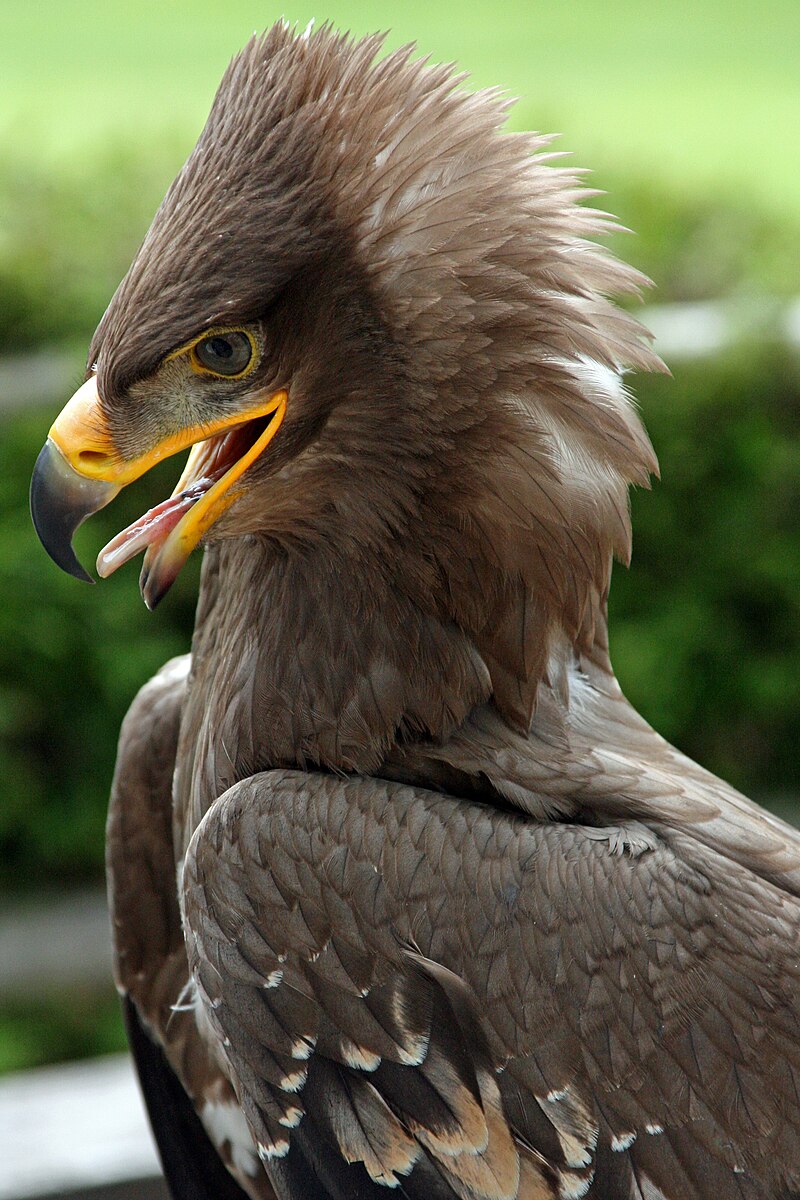The steppe eagle (Aquila nipalensis) is a medium-sized, migratory eagle that can live up to 41 years in captivity. This species is found in Europe, Asia, and Africa, inhabiting a variety of habitats, including desert, semi-desert, open savannah, grassland, open woodland, cultivated areas, and steppes.
The Lifespan of Steppe Eagles in Captivity
As mentioned earlier, steppe eagles can live up to 41 years in captivity. This is significantly longer than their lifespan in the wild, which varies depending on the species. For example, bald eagles generally live 20-30 years, and harpy eagles live 25-35 years in the wild.
The longer lifespan of steppe eagles in captivity is due to the controlled environment and access to regular food and medical care. In the wild, eagles face various challenges, such as predation, disease, and environmental factors, which can shorten their lifespan.
Factors Affecting the Lifespan of Steppe Eagles in Captivity
 Image source: Steppe Eagle by Fimb
Image source: Steppe Eagle by Fimb
Several factors can influence the lifespan of steppe eagles in captivity, including:
-
Diet and Nutrition: Providing a balanced and nutritious diet is crucial for the health and longevity of steppe eagles in captivity. A diet that meets their nutritional needs can help prevent health issues and support their overall well-being.
-
Veterinary Care: Regular veterinary check-ups and prompt treatment of any health issues can significantly improve the lifespan of steppe eagles in captivity. Captive eagles have access to specialized medical care, which is not always available in the wild.
-
Stress Management: Minimizing stress and providing a comfortable, enriched environment can also contribute to the longevity of steppe eagles in captivity. Stress can weaken the immune system and lead to various health problems.
-
Breeding and Reproduction: In captivity, steppe eagles may have a longer reproductive lifespan compared to their wild counterparts, as they are not subject to the same environmental pressures and risks.
Comparison to Other Eagle Species
As mentioned earlier, steppe eagles can live significantly longer in captivity compared to other eagle species. Here’s a comparison of the lifespan of different eagle species in the wild and in captivity:
| Eagle Species | Lifespan in the Wild | Lifespan in Captivity |
|---|---|---|
| Steppe Eagle | 20-30 years | Up to 41 years |
| Bald Eagle | 20-30 years | Up to 50 years |
| Harpy Eagle | 25-35 years | Up to 60 years |
| Golden Eagle | 30-45 years | Up to 50 years |
It’s important to note that these are general estimates, and the actual lifespan of an eagle can vary depending on various factors, both in the wild and in captivity.
Conclusion
In conclusion, the steppe eagle (Aquila nipalensis) is a remarkable bird that can live up to 41 years in captivity, significantly longer than its lifespan in the wild. This extended lifespan is due to the controlled environment, access to regular food and medical care, and the absence of many of the challenges faced by eagles in the wild. By understanding the factors that contribute to the longevity of steppe eagles in captivity, we can better appreciate the importance of conservation efforts and the role of captive breeding programs in protecting these majestic birds.
References:
- https://en.wikipedia.org/wiki/Steppe_eagle
- https://kids.britannica.com/students/article/eagle/274099
- http://eagleencyclopedia.org/species/steppe_eagle.html
- https://www.nps.gov/places/000/bald-eagle.htm
- https://operationmigration.org/steppe-eagle-the-ultimate-guide/

